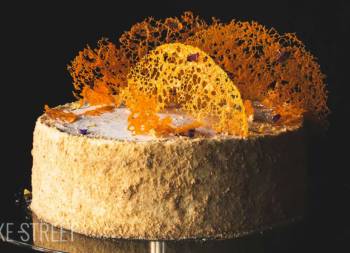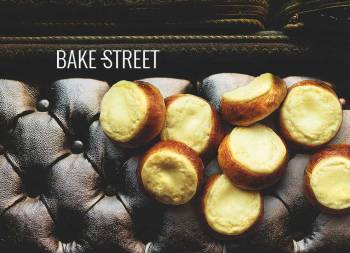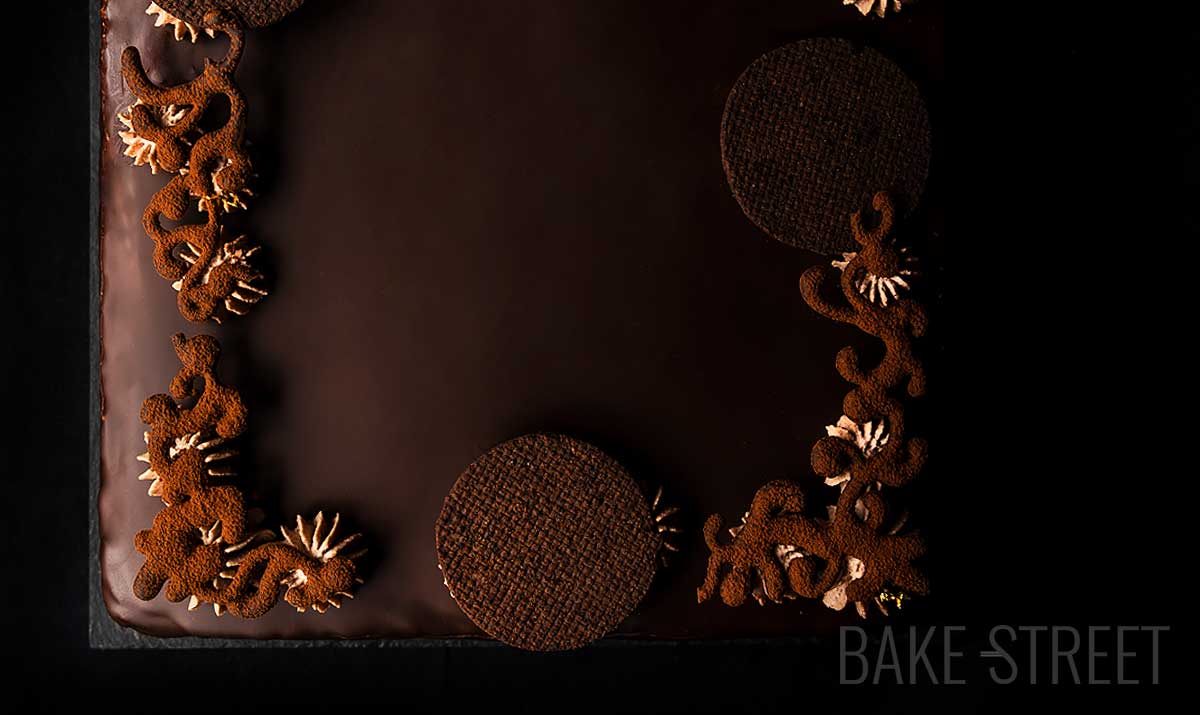
Bird’s Milk Cake
A few weeks ago a reader wrote to me to ask me if I could, please, find the recipe for a sweet of Russian origin that she liked very much and had not been able to try again. The recipe was for a sweet called “Bird’s Milk” and she ate it as a bonbon. It is true that when I looked up the recipe, I saw that it was also made as a cake despite being a more modern format. You know that my thing with cakes is something out of this world (I’m obsessed with them), so I leave you the recipe, but in this format. Bird’s Milk Cake.
First of all, I want to thank you from the bottom of my heart for letting me know about this wonderful cake and for writing to me. Of course, as soon as I read it, I started to look for information about it to post it on the blog as soon as I had gathered all the necessary information about it. For those of you who prefer to make it as a bonbon, the process is the same, just omitting the sponge cake. After freezing it, unmould it, cut it and dip it in chocolate 😉
I’m going to tell you one thing, I love you a lot. Not only for being there every day, for accompanying me on this crazy journey, but also for sending me wonders like this one. At home we have fallen in love with this sweet treat, it is absolutely extraordinary and spectacular in terms of flavour and texture. Very delicate, soft, silky… Perfect to eat at any time of your day and life, I promise you.
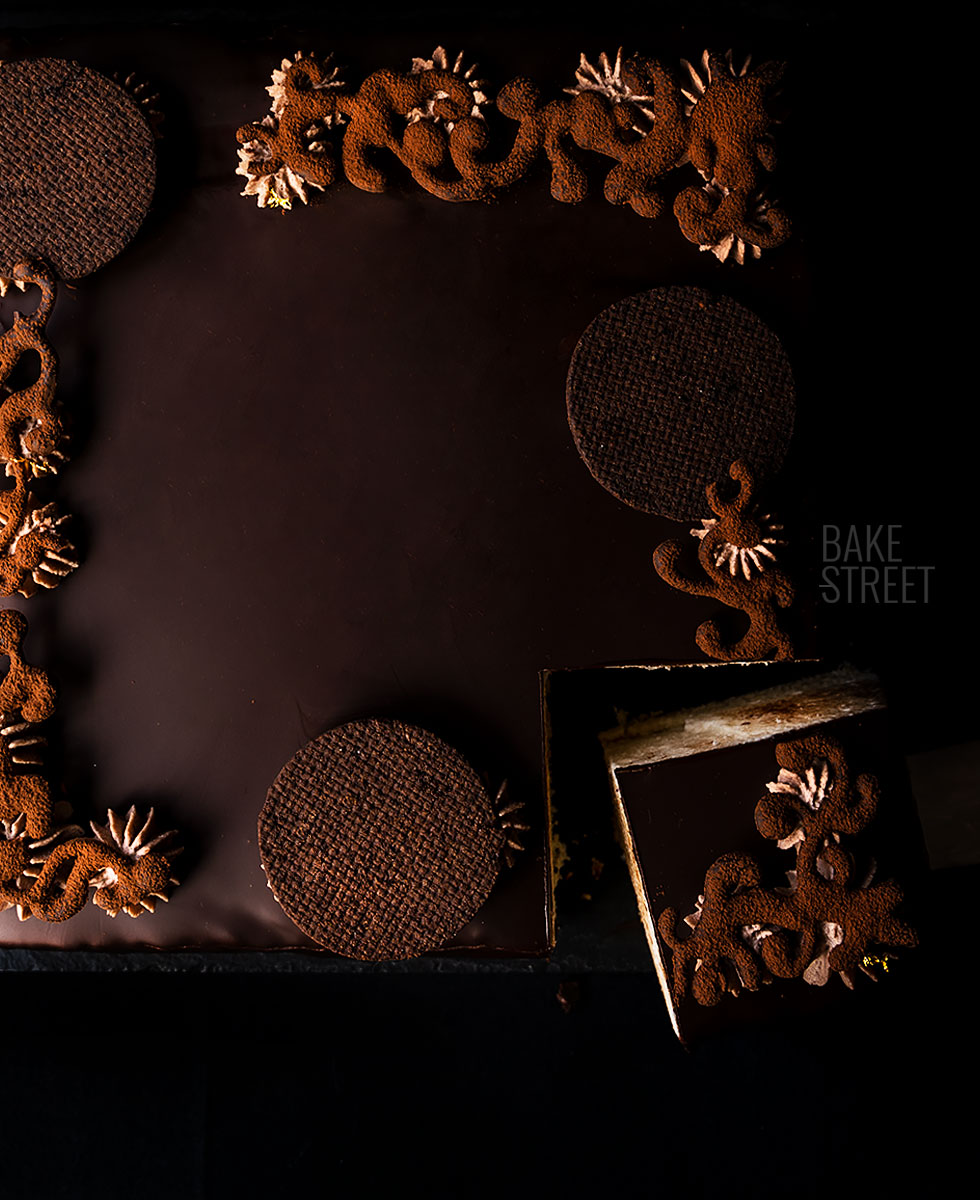
Bird’s Milk Cake origin.
The first impression you get when you see the inside of this cake or bonbon is wonderful. You can almost sense the fluffiness of the filling, and indeed you can.
The filling is a soufflé, extraordinarily airy, creamy and delicately flavoured. This marvel is covered with a thin layer of dark chocolate, the better the quality, the better.
If it is made as a cake, it is accompanied by a thin, soft sponge cake. In my case, I chose a Genoise sponge cake, which is perfect for this type of preparation (as I did in the Lemon soufflé tart). As you can imagine, the result is dreamy.
The name of this sweet treat, ptichye moloko (птичье молоко) as it is called in Russian, is just as special and unique as the cake itself, literally meaning “the milk of birds“. According to an ancient legend, “bird’s milk” is a sacred ingredient with which the birds of paradise fed their chicks.
However, this is not the real origin of the name, but “bird’s milk” is an ancient Greek idiom meaning “an unattainable delicacy“.

The concept of “bird’s milk” (Ancient Greek: ὀρνίθων γάλα, ornithon gala) dates back to ancient Greece. Aristophanes uses “the milk of birds” in the plays The Birds and The Wasps as a proverbial oddity. The expression is also found in Strabo’s Geographical Works, where the island of Samos is described as a blessed country, to which those who praise it do not hesitate to apply the proverb that it “even produces bird’s milk”.
A similar expression lac gallinaceum (Latin for hen’s milk) was also used later by Petronius and Pliny the Elder as a term for something of great rarity. In one of these tales, a beautiful princess tests her suitor’s wits by sending him into the desert to find and bring back the one fantastic luxury she does not have and desires: bird’s milk. Something impossible to find.
In the story “The Hare” by Aleksey Remizov, the magical bird Gagana produces milk.
It is one of the most recognised chocolate confectionery/chocolates in Poland as it has exclusive rights to the name.
Other confectionery manufacturers also make them, but under different names, e.g. Alpejskie mleczko, ‘alpine milk‘. However, Ptasie mleczko is often used to refer to similar chocolates flavoured with vanilla, cream, lemon or chocolate.
In Russia, ptichye moloko or bird’s milk cake can be found in both bonbon and soufflé cake formats. The brand name was introduced in Soviet times and is today used by companies operating the factories that produced these sweets and cakes since that time. It is also produced in other post-Soviet states; Belarus, Ukraine, Moldova and Estonia.
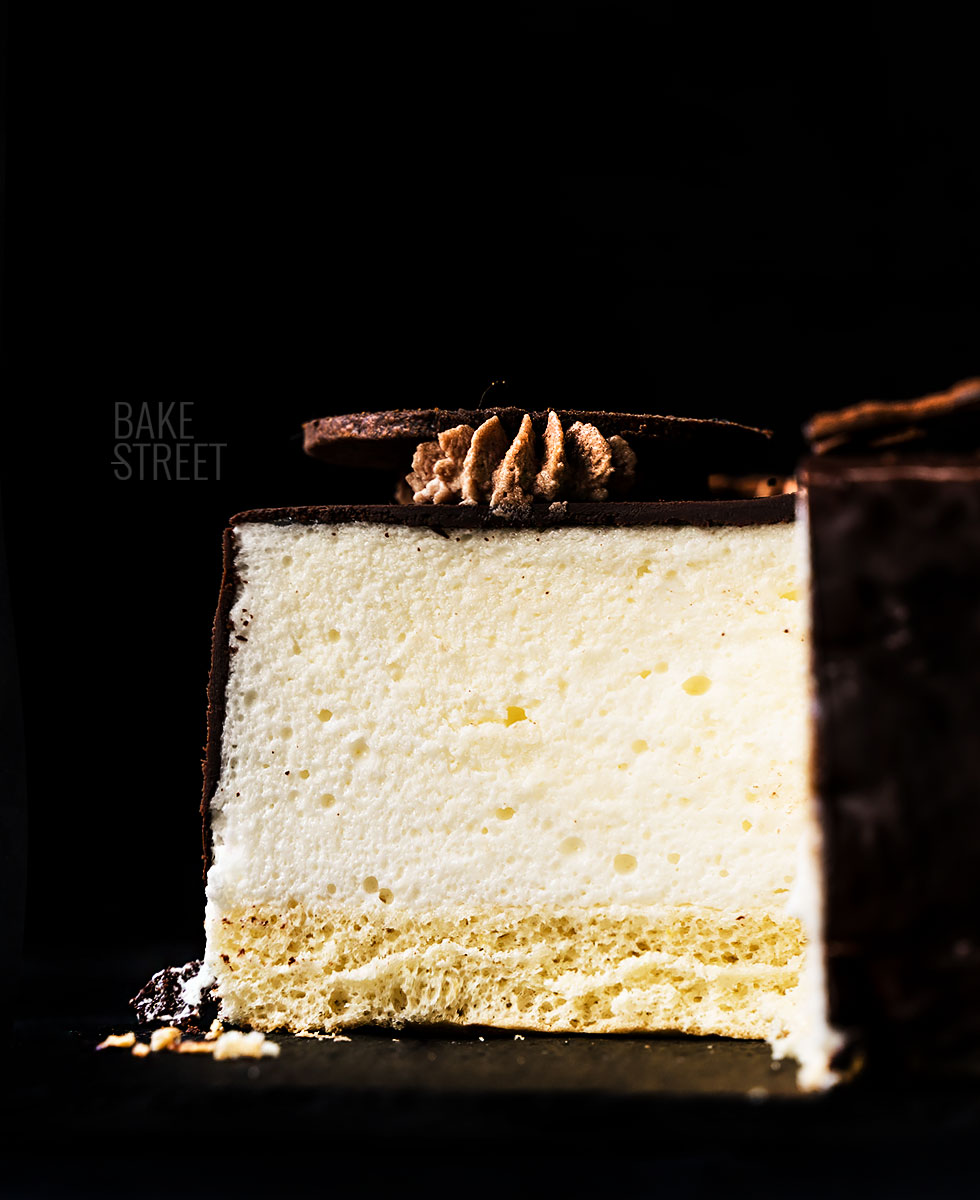
The ptichye moloko – bird’s milk cake from Soviet times has Polish roots.
In the 1930s, Warsaw confectioner Jan Wedel (owner of the E. Wedel company) created soufflé sweet treat which he called ptasie mleczko (marshmallow). According to the company’s official history, Wedel’s inspiration for the name of the sweet came from his travels in France, when he asked himself: ‘What can give greater happiness to a man who already has everything? Then he thought: “Perhaps only bird’s milk”.
The sweets were so popular that after a while they spread to Russia. Ptichye moloko was introduced in 1967 by Vladivostok and in 1968 by the Rot Front factory in Moscow. It became a success and the Krasny Oktyabr (‘Red October’) confectionery factory in Moscow started mass production in 1975.
In 1978 the recipe was transformed into what is now known as the legendary ptichye moloko or bird’s milk cake. Moscow confectioner Vladimir Guralnik recalls that it took him six months to perfect the laborious recipe.
He transformed the popular bonbon into a cake at Praga restaurant in Moscow. It consisted of a lightly filled sponge cake accompanied by an airy soufflé and topped with a thin, delicate chocolate glaze. A distinctive feature of the Russian recipe is the use of agar-agar instead of gelatine as a thickening agent, which withstands the high temperature necessary to achieve the optimum soufflé consistency.
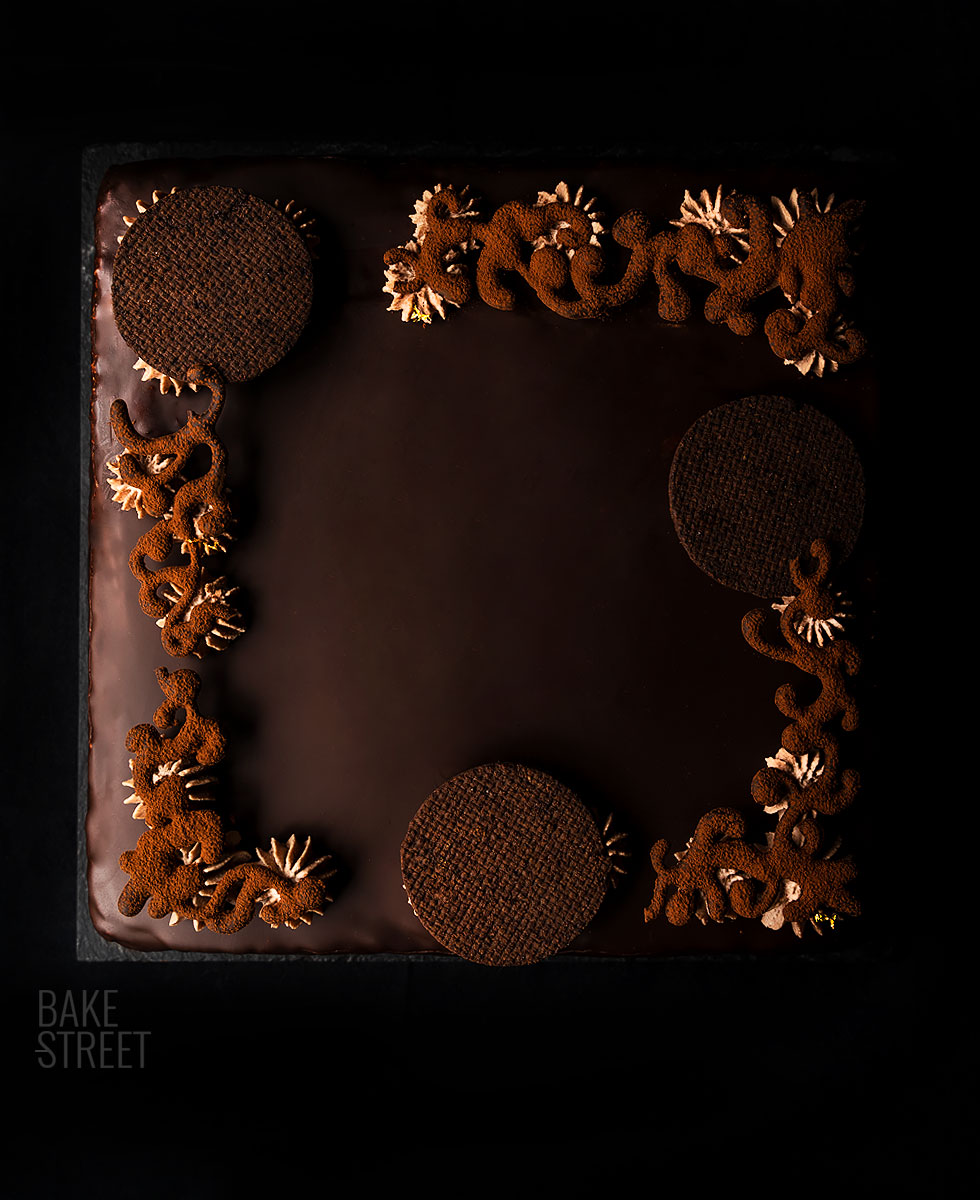
The recipe was quickly copied by other Moscow restaurants such as Moskva, Budapesht and Ukraina.
In the 1980s, a special ptichye moloko – bird’s milk cake factory was built in the Novye Cheryomushky district of southern Moscow. Today, both the cake and the chocolates are widely available in supermarkets and speciality shops throughout Russia.
This recipe, like many other traditional recipes, was kept secret for many years. The original recipe was made with ingredients, which were key to a perfect result, such as agar-agar and condensed milk. At that time, Soviet housewives did not know these ingredients and tried to recreate it at home as best they could.
Today, there are countless recipes available with a wide variety of options. Most of them, however, keep their key elements intact.
The recipe I leave you with is not made with agar-agar but with gelatine. I read many recipes in which the cake was frozen to be perfectly unmoulded and it was said that if you did it with agar-agar, the final result was not good. In case you don’t freeze the cake and you prefer to use this seaweed, you can do it without problems.
Recipe Bird's Milk Cake
GENOISE SPONGE CAKE:
- 4 large eggs
- 100 g pastry/cake flour
- 100 g sugar
- 20 g corn starch
- pinch of salt
"BIRD'S MILK" FILLING:
- 200 g unsalted butter at room temperature
- 150 g condensed milk
- 210 g egg whites
- 365 g sugar+ 125 water (for syrup)
- 6 gelatin sheets (11 g) + cold water (fridge) to hydrate+ 100 g water at 140ºF to disolve
- 2 tsp vanilla extract
CHOCOLATE COATING:
- 315 g dark chocolate 70%
- 88 g vegetable oil (sunflower or seeds)
DECORATE:
- whipped cream with cocoa powder (100 g heavy cream + 1 Tbsp icing sugar + 1 cTbsp cocoa powder)
- chocolate sablée cookies (link recipe)
- 50 g dark chocolate 70% (for decorations) + unsweetened cocoa powder
- edible gold leaf (optional)
MATERIAL WE WILL NEED:
- KitchenAid or stan mixer
- perforated tray
- cooling racks
- piping bags
- 4B Wilton tip (or another to your choice)
- pastry spatula
- digital scale
- digital kitchen thermometer
- square mould 23 cm on each side
- bowls
Instructions
Make Genoise sponge cake.
- Sift the flour and mix with the cornstarch and salt. Set aside.
- Separate the egg yolks from the egg whites. Incorporate the yolks in a bowl that supports the heat, along with half of the sugar.
- Place the bowl on a saucepan in the water-bath without boiling at medium low heat.
- Whisk them with the electric whisk until they are whitened. We will observe that they acquire a whitish color.
- Remove from heat and set aside.
- Assemble the egg whites with the other half of sugar until a firm and shiny meringue is obtained.
- Incorporate the whitened yolks with the meringue and mix with soft and enveloping movements.
- Begin to add the flour little by little and integrating in the mixture with enveloping movements. We must never beat or stir the mixture, otherwise we will lower the meringue.
- Transfer the mixture to a piping bag.
Bake.
- Preheat oven to 390ºF (200ºC).
- Line a perforated tray with baking paper. To prevent the ends of the paper from rising or moving when you put the batter, place small ponits of batter in the corners. In this way the paper will remain fixed.
- Cut the tip of the pipping bag and place the batter in the tray as I show you in the video. Make a rectangle and then fill the inside trying to exert the same pressure at all times.
- If we have more batter in the pipping bag, we will create lines around the rectangle.
- Bake for 8-10 minutes. We will see that it acquires a light golden color on the surface. In addition, if we press the surface of the cake, it will return to its initial state.
- Remove from the oven and let it cool completely on a rack.
- Once cool, cut. Place the mould on the sponge cake and cut to create the base of the cake.
- If necessary, with the help of a sharp knife, reduce the size of the square so that it fits perfectly.
- Set aside.
Prepare "Milk's Bird" filling.
Hydrate the gelatine and prepare the butter.
- Hydrate the gelatine sheets in very cold water, from the fridge, for 15 minutes. The amount of water, in this case, is without measure. Just enough to cover the sheets completely.
- On the other hand, prepare the butter cream.
- In the bowl of the KitchenAid, add the butter and beat on medium speed with the whisk. The texture should be very airy, creamy and whitish in colour.
- Pour in the condensed milk in a thin, continuous stream until it is all integrated. Once it has been incorporated, increase the speed to medium and beat for a few seconds. Set aside.
Prepare Italian meringue.
- Incorporate water and sugar in a saucepan. Place at medium heat.
- We will use a kitchen digital thermometer to know the temperature of the syrup. When it reaches 244ºF/118ºC, remove it and add it to the semi-whipped egg whites.
- Add the egg whites in a bowl or KitchenAid bowl and begin to whip them.
- Beat until they are quite firm, but not too much or dry.
- The syrup will be ready as soon as we reach this point.
- Incorporate the syrup in a fine continuous thread over the egg whites beating at the same time. Add vanilla extract.
- We will continue until a firm consistency is achieved and a very glossy meringue.
Add the gelatine and butter mixture.
- Drain the gelatine well and place in a saucepan with the 100 g of water at 140ºF/60ºC.
Dissolve very well. - Add the dissolved gelatine to the Italian meringue. We will do it in a thin and continuous thread while mixing at low speed.
- Once all the gelatine has been integrated, increase to medium-high speed and beat to distribute well throughout the meringue.
- Finally, add the butter mixture. We will do it little by little and waiting for the first part to be integrated before adding the next one. Mix on low speed and mix just long enough to integrate the butter.
- As we add more butter, the mixture will liquefy slightly and lose a little volume.
Pour the mixture into the mould.
- Pour the mixture into a 23 cm square cake tin lined with cling film (this will help the cake to unmould well). Tap gently to settle the mixture and smooth the surface with a spatula.
- Place the prepared sponge cake on top of the filling. The golden side should face outwards, with the whiter side in contact with the filling.
- Press down gently to fit the sponge cake.
- Cover the entire outside with cling film and store in the freezer for 12-24 hours.
SECOND DAY
Prepare chocolate coating.
- In a heat-resistant bowl, add the chocolate and the oil.
- Place in a bain-marie and melt. Stir from time to time.
- Remove from the heat and allow the temperature of the chocolate to fall to 100ºF/38ºC.
Cover the cake with chocolate coating.
- Remove the cake from the freezer, remove the film and unmould.
- Place the cake on a wire rack and place it on a serving dish or container to catch the excess of the chocolate.
- Next, pour the chocolate coating all over the cake.
- Gently tap the rack to settle the coating and allow it to harden. As the cake is frozen, it will harden quite quickly.
- With the help of two spatulas, transfer the cake from the grid to the plate/surface on which you are going to serve it.
- Refrigerate.
Make chocolate decorations.
- Melt the chocolate in a bain-marie.
- Pour into a piping bag with a piping tip. Wait until the chocolate is cool and has a good consistency for drawing.
- Create the pattern we like the most on baking paper. Once done, refrigerate to harden.
- Before using to decorate the cake, sprinkle with cocoa powder.
Prepare whipped cream with cocoa.
- Cream must be cold 24 hours before used it.
- The bowl in which we are going to make whipped cream must be cold. I recommend to use one aluminium bowl and freeze 20 minutes before beat it.
- Pour heavy cream into freeze bowl and beat with an electric mixer into low speed.
- Once cream is becoming to form stiff peaks, add sugar little by little stirring the whole time. Add cocoa powder.
- Increase speed gradually but without reaches high one. Ideally use medium speed.
- Be sure not to over-beat, otherwise cream will become lumpy and butter-like.
- Put whipped cream into a piping bag with 4B Wilton tip.
Decorate Bird's Milk cake.
- Pipe the whipped cream with cocoa on the outside of the cake. Our purpose is to create a support for the chocolate decorations.
- Place chocolate sablée biscuits, the chocolate decorations and some gold leaf if desired.
- Serve.

Notes
- When making the sponge cake, we must take care to mix it just enough at the moment of incorporating the dry ingredients. Otherwise, we run the risk of lowering the egg whites and obtaining a sponge cake that is not very fluffy or dense.
- In my case, I like to pipe it, but if you prefer, you can spread it on a tray previously lined with baking paper or teflon.
- Do not overcook the sponge cake to prevent it from becoming dry instead of juicy.
- The water to hydrate the gelatine must be very cold, otherwise it will dissolve.
- The syrup should be added to the egg whites little by little so that they cook and the heat is distributed evenly. The egg whites should also be perfectly whipped.
- The gelatine must be dissolved in water at 140ºF/60ºC and then incorporated into the Italian meringue.
- This cake is usually made with agar agar, but agar agar does not work well in this cake when frozen. When it comes to unmoulding the cake cleanly, it is much better to use gelatine.
- When incorporating the butter into the meringue, it should be done slowly and at low speed. In this way, it will be incorporated evenly, without damaging the volume of the meringue.
- It is normal for the volume of the filling to drop a little after integrating all the butter, as well as acquiring a more liquefied consistency.
- Freeze the cake to make it easier to unmould and cover it with the coating. Remember that gelatine is thermo-reversible and when heat is applied to it, it will lose its gelling characteristics until it cools down again. So if you pour in a very hot topping.... We know what can happen to us.
- If you wish (I recommend it), you can moisten the Genoise sponge cake with syrup just after placing it on top of the filling. It will give it a wonderful juiciness.
- The chocolate couverture should be used at 100ºF/38ºC to prevent it from spoiling the surface of the cake, as well as to ensure that after cooling, the colour, shine and finish is correct.
- The decoration of the cake is completely optional. In my case I have left you with this option, but you can do it however you like.
- It can be kept refrigerated for 4-5 days.

I don't know if it's like me, but this Bird's Milk Cake reminds me a lot of some candies I used to eat when I was a child. They were made like marshmallows and covered in chocolate...They were in the shape of a heart, but not even close to what this cake is! But it reminds me of it.
Although it is a recipe with several steps, it is very easy and simple to carry out. We just have to be meticulous in the whole process and do it calmly and with a lot of love. I assure you that the time and effort put into it are well worth it, and well worth it!
I wish you a wonderful weekend!
Big hugs,
Eva
Sources: Rusia Beyond, Wikipedia



